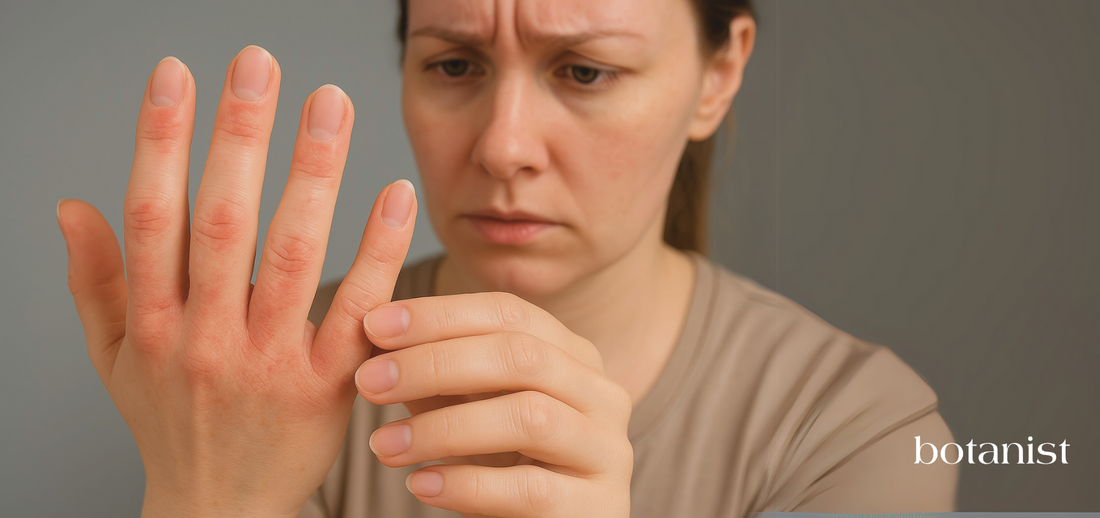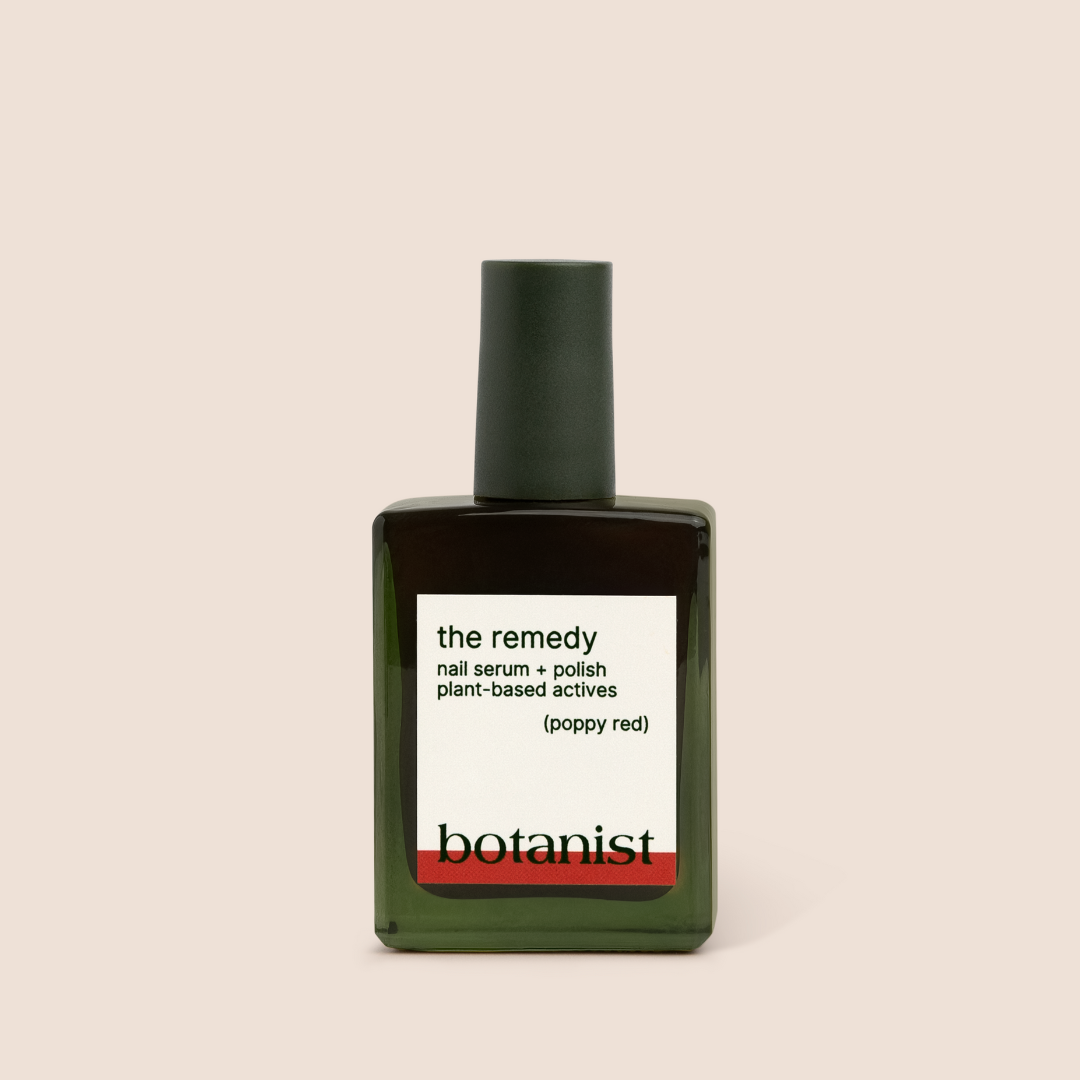Gel Polish Allergies Are Real: Here’s a Safer, Healthier Alternative
Tess Miller
Summary
- Allergies to gel polish are increasing, often due to ingredients like HEMA
- Many popular brands still contain harsh chemicals banned elsewhere
- HEMA-free gel polishes provide a safer, long-lasting alternative
What’s Causing All These Gel Polish Reactions?
If you've ever experienced red, itchy skin, burning cuticles, or even nail damage after a gel manicure, you're not alone. More and more people are developing gel polish allergy symptoms, sometimes suddenly, even after years of use.
One of the biggest culprits is a chemical called HEMA (2-Hydroxyethyl Methacrylate), along with its close relative, Di-HEMA TMHDC. These ingredients are commonly used in gel formulas to create that long-lasting, glossy finish we all love. However, because of their small molecular size, they can penetrate the skin and cause allergic reactions. For some people, a single exposure can lead to lifelong sensitivity.

Why Some Countries Are Taking Action
In 2021, the European Union banned the use of HEMA in consumer nail products due to its potential health risks. Despite this regulation, HEMA and similar ingredients are still available in many countries, including the U.S., and often appear in at-home gel kits.
The problem is that many consumers don’t realize what’s in their polish. Ingredient lists may be vague or hard to find, and most people don’t scan labels before doing their nails. This is why awareness and education are so important, especially if you’ve had a past allergic reaction to gel nails.
What Makes a Gel Polish Safer?
Fortunately, there are newer HEMA-free gel polish alternatives that offer the same salon-quality results without relying on HEMA or similar chemicals. These safer formulas use larger, non-reactive ingredients that stay on the surface of the nail rather than soaking into your skin, helping reduce the risk of irritation or allergic reaction.
In addition to being free from sensitizing agents, many safer nail products now include plant-based ingredients, avoid harsh solvents, and are tested for skin compatibility. Look for labels that say “HEMA-free” or “12-free,” which means the product excludes twelve of the most common harmful chemicals found in traditional nail polish.
How Safer Gel Options Compare
Application
These products apply just like traditional gel polish and cure under UV or LED light. The difference is that they do not require harsh primers or nail dehydrators, which often weaken natural nails over time.
Removal
Many safe gel polish options can be removed easily using acetone-free removers. This helps protect the natural nail and surrounding skin, especially with regular use.
Long-Lasting Results
Just like conventional gels, these alternatives can last anywhere from 10 to 14 days. They provide rich color, shine, and a salon-finish look without the need for harsh ingredients.
The botanist nail polish remover doesn’t contain acetone, it’s the perfect way to remove nail polish and protect your nails

Who Should Make the Switch?
- If you’ve had a reaction before: Even mild irritation is a warning sign from your skin, and switching early can prevent more serious damage.
- If you're pregnant or breastfeeding: Choosing non-toxic nail polish is a healthier option during these important life stages.
- If you love DIY nails: At-home use increases the risk of direct exposure since most people don’t have proper ventilation like salons do.
- If you want safer, cleaner beauty products: Many newer options follow cruelty-free and eco-friendly standards while still looking beautiful.
Don’t Fall for These Common Myths
“I’ve never had a problem, so I’m fine.”
Allergic reactions can develop over time. Even if you’ve used the same product for years, your body can suddenly start reacting to it.
“It’s sold in stores, so it must be safe.”
Just because something is available online or in retail shops doesn’t mean it meets the same safety standards everywhere. Always read ingredient labels.
“Wearing gloves during application protects me.”
Gloves may help reduce contact, but polish can still touch the cuticle or small areas of exposed skin. That’s often enough to cause a reaction in sensitive individuals.

What to Look for in a Safer Gel Polish
To reduce the risk of irritation or allergies, look for gel polish products that are:
- Clearly labeled HEMA-free gel polish
- Free from common irritants like formaldehyde, toluene, and camphor
- Acetone-free during the removal process
- Dermatologist-tested or labeled safe for sensitive skin
- Made with plant-based, vegan, or cruelty-free ingredients when possible
There are several quality options available today that meet these standards. With a little research, you can find a product that aligns with your values and protects your nail health.
The remedy rose is a nail polish irritants and cruelty free.
Feel Beautiful Without the Risk
Gel polish allergy is becoming more common, but that doesn’t mean you have to give up having strong, beautiful nails. Safer gel alternatives offer a way to enjoy long-lasting color and shine without compromising your skin’s health.
Whether you’re doing your nails at home or choosing a salon service, choosing a cleaner formula makes a difference. Beautiful nails should never come at the cost of your comfort or well-being. With the right product, you can enjoy both style and safety every time you polish.
